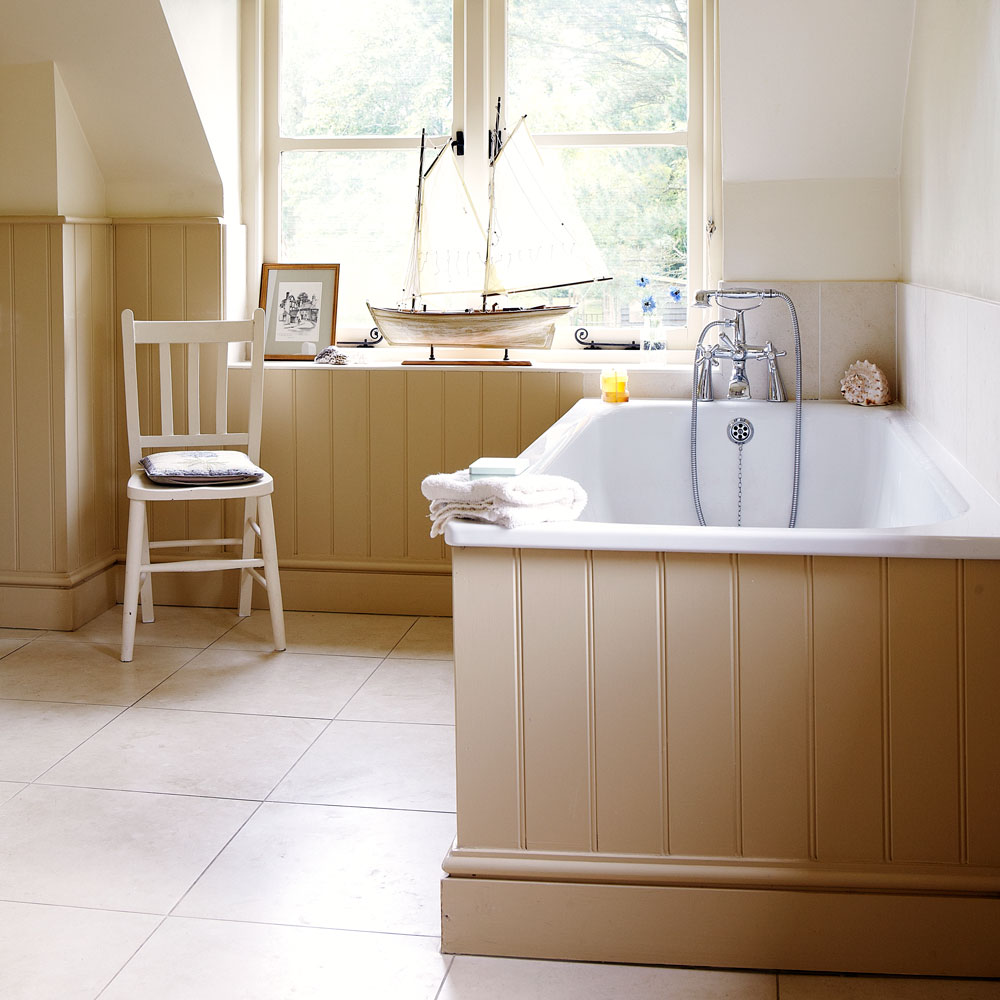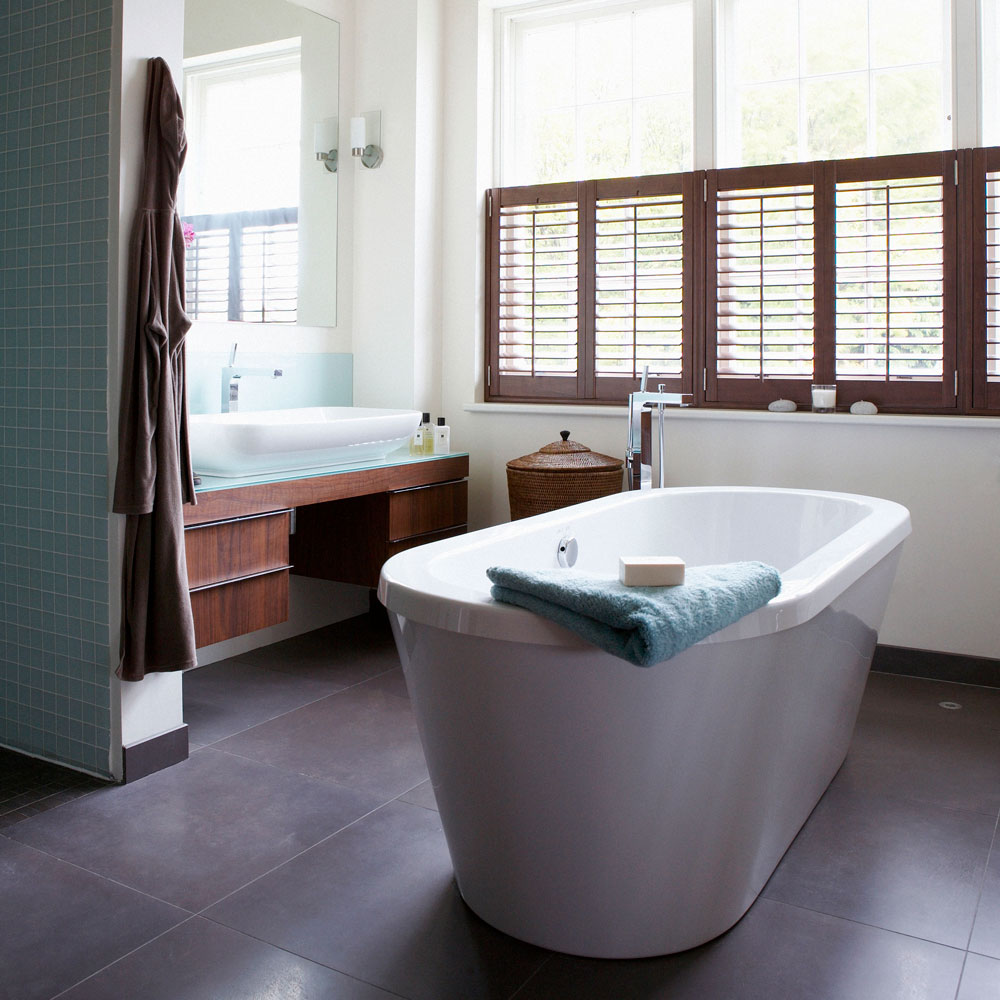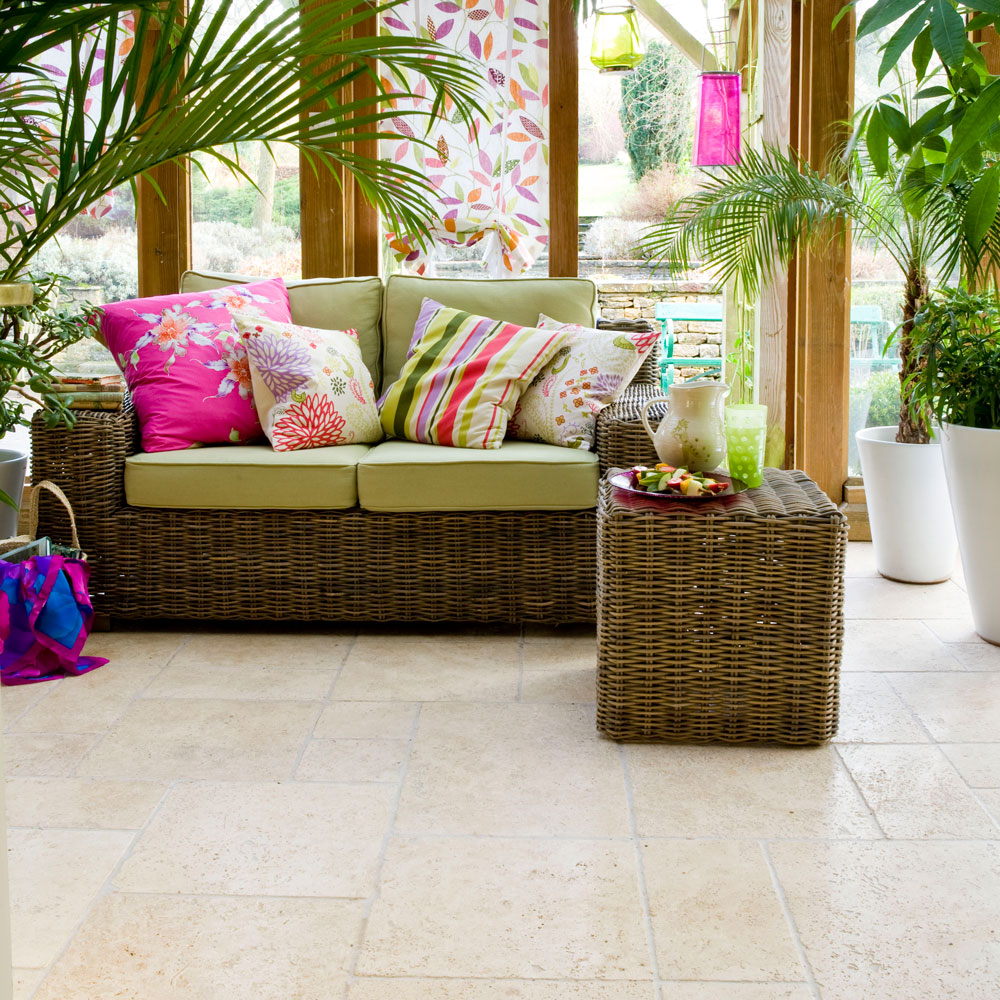Electric underfloor heating: all the pros and cons explained
Discover whether a dry underfloor heating system is the right solution for keeping your floors warm

One tempting choice for heating your home is electric underfloor heating (UFH) is a. Also known as dry underfloor heating, not only is it easy to install and maintain, but it delivers an even spread of warmth across the whole floor surface, cutting out cold spots entirely.
Once considered a luxury, dry underfloor heating is quickly becoming a must-have feature for the bathroom. 'UFH is definitely worth thinking about for this area,' says Sarah Wazir, a marketing executive at Warmup. 'You’ll save a lot on the labour costs if the flooring is being lifted up and changed anyway.' Additionally, electric underfloor heating will also take the chill off the cool surface of your floor tiles.
Products come in an array of heat outputs, depending on the requirements of the space you’re installing UFH in. Higher wattage solutions are available for areas with greater levels of heat loss, too. If you’re unsure what solution will suit your scheme best, it’s worth bringing in an expert to advise on the different options and carry out a heat loss survey.
You can choose from loose cable or mat-based electric underfloor heating systems, each of which features a network of wires that heats up when switched on. In turn, this layer of cables warms the floor finish above, transmitting a cosy, radiant heat to the rest of the room.
'Radiant heat enables comfort to be felt sooner, at a lower temperature level,' says Sarah. 'Plus there's next to no air flow, which means the temperature remains even throughout the space.'
The pros of electric underfloor heating

- With electric underfloor heating you get a radiant warmth that is transmitted upwards from the floor, rather than the warmth being circulated around the room like you’d get with a conventional radiator. This means that with an effectively installed electric system, you won’t get cold spots.
- Fitting some mat-based types of electric underfloor heating, such as those at The Underfloor Heating Store, should be well within the scope of a competent DIYer. This is an excellent advantage if you want to save money on installation costs, as the labour for installing a water-based solution might amount to as much as £300 per day.
- One of the main advantages of a dry system is the lower cost of installation and materials. 'As the wires can be laid directly on top of the subfloor, instead of pipes being fitted into the subfloor, this costs significantly less than a water-based system,' says Adam Chard, content manager at Victoria Plum.
- Electric systems typically heat up quicker than hydronic alternatives, which feature a network of pipes that warm water is streamed through to heat the floor above.
- Another bonus is the rapid installation times of electric underfloor heating. 'Some products can be installed in under 30 minutes,' says Luciana Kola, marketing manager at Uponor UK. 'In comparison, water-based systems often take longer to install and require additional time to test the system, the flow and pressure of the water, as well as the time taken to allow the layer of screed to dry before installing the floor finish.'
- Loose wire systems can be shaped to suit the shape of the room that you’re laying heating in, which is great if you’re working with any tricky dimensions.
- The slim sticky mat or loose cables that form electric UFH often mean that this setup is the go-to solution for renovation projects, as they result in little height build-up to your floors. There will still be some build up, as you may need to fit a backing board and insulation. However, as the wires are so thin, they can be a lot closer to the surface of your floor finish.
- After it’s been installed, an electric system is basically maintenance free, whereas the pipes in a warm-water setup might occasionally need to be flushed to get rid of any debris that has gathered.
- Electric underfloor heating is widely considered the go-to solution for standalone rooms if you’re not planning to upgrade the central heating system throughout your whole property. This is because the system doesn’t need to be connected back to a central manifold, so it’s straightforward to install in one room without any disruption in other areas of the house.
- Some smart thermostats can be paired with electric underfloor heating, which means you can adjust your heating settings remotely. Other devices, including timers and motion sensors can be integrated into your electric UFH setup to maximise its efficiency, making sure that your system is not emitting heat when it’s not required.
The cons of electric underfloor heating

- The electric underfloor heating costs are higher when it comes to running the system than warm-water options. This is simply down to the fact that one unit of electricity (measured in kilowatt hours, kWh) costs more than one unit of the natural gas that’s used to power your boiler, linking to a hydronic UFH system. 'The running costs can be three times higher, so water-based UFH systems are far more cost-effective in large spaces,' says Luciana from Uponor. This means electric underfloor heating can potentially be expensive to run if you’re not controlling the system effectively. It’s worth investing in a good quality thermostat, potentially even a smart model, that will allow you to monitor your energy usage closely and get the best out of your system.
- If running costs are a key factor in specifying your UFH, it’s worth keeping in mind that electric solutions might not be the best fit for rooms with a high level of heat loss. 'One of the most problematic uses for electric UFH is in rooms such as conservatories,' says Luciana. 'Typically, these areas need a lot of heat and are used for relatively long periods of the day. This is where running costs can potentially become an issue, so installing a water-based system is definitely worthwhile.'

- While electric UFH is quicker to heat up, offering impressive response times for when you only need a short burst of heat, it’s also quicker to lose heat. This means that once the system is switched off, the floor surface will cool down quicker than with a warm-water setup.
- If your electric system breaks down due to an issue with the wiring, it can be challenging to identify exactly where the fault is so you can repair it. With a water-fed pipe system, it’s possible to see where a leak has occurred, making it much easier to pinpoint the location of the problem. Fixing it might involve some disruption, but it is possible to repair.
- Some suppliers would advise against pairing certain types of electric underfloor heating with vinyl flooring products. This is because the vinyl shouldn’t come into direct contact with surfaces above 27°C, so it tends to work better with systems that are embedded into the subfloor, rather than those that are placed on top of it. With most floor coverings, however, it shouldn’t be an issue. Always refer to your flooring supplier’s guidance on underfloor heating to get the best advice for your situation.
- Dry UFH has the potential to create hot spots in a room where there’s a second source of warmth, such as a statement woodburning stove or fire.
- Extra care must be taken regarding the placement of furniture. Flat bottomed items should not be placed over areas where heating mats or cables have been laid, as this can limit airflow to the floor, causing hot spots that could damage your flooring, or in extreme cases, present a fire hazard. Careful planning at the design stage of your project will help you avoid this issue.
Get the Ideal Home Newsletter
Sign up to our newsletter for style and decor inspiration, house makeovers, project advice and more.

Rebecca Foster started her journalism career in Bangkok in 2013, where she worked on the in-house editorial team at a luxury homes magazine. Since then, Rebecca has contributed to numerous property and interiors titles in the UK and Southeast Asia. She re-located to London in 2015 to work at one of the country’s leading self-build and home renovation magazines. In 2017, she left her job to split her time between freelance journalism and teaching yoga.
-
 Will a conservatory add value to your home and how can you maximise it?
Will a conservatory add value to your home and how can you maximise it?This is what the pros say
By Amy Reeves
-
 I’ve been looking for a new signature scent for my home and The White Company's new fragrance is the exact summer holiday smell I needed
I’ve been looking for a new signature scent for my home and The White Company's new fragrance is the exact summer holiday smell I neededSantorini smells fresh, summery and sophisticated
By Kezia Reynolds
-
 How to remove algae from garden walls in five steps – and the cleaning product experts rave about for tackling it fast
How to remove algae from garden walls in five steps – and the cleaning product experts rave about for tackling it fastExperts share their top tips for getting garden walls algae-free
By Katie Sims